CSotD: Smart Enough For The Room
Skip to comments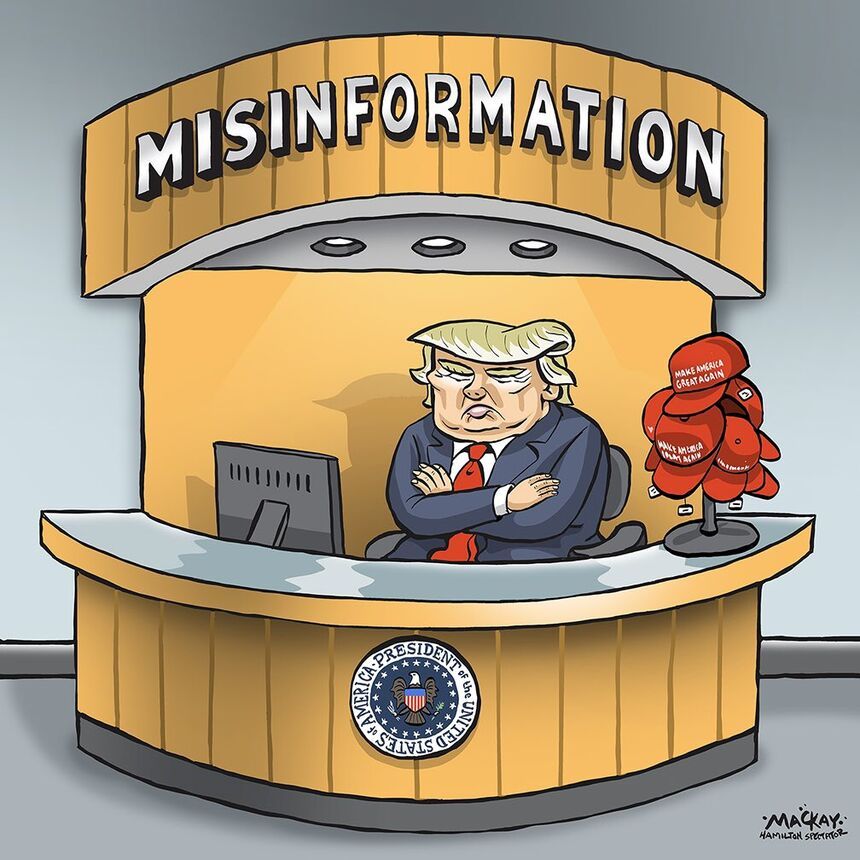
Graeme MacKay makes more of an observation than a wisecrack, and, since he’s Canadian, it’s not simply based on party affiliation.
Trump definitely falls under the category of “Sometimes in error, never in doubt,” and it’s an open question of how much of his misinformation is deliberate and how much is misremembered facts or wishful thinking.
It starts with the simple fact that we elected a bullshit artist.
That’s not the same as a con artist, because bullshit is protected under law and is a central facet of the wheeler-dealerism Trump celebrates with his book, “The Art of the Deal” and his frequent declarations of what a good dealmaker he is.
The legal term is “puffery,” a promotional claim that can neither be proven nor disproven, such as “the finest shoes ever made.”
By contrast, if you say “three out of four podiatrists recommend our shoes,” you’d better be able to come up with a list, on the off-chance that another shoemaker challenges your claim in court.
Trump began his string of presidential misstatements with the claim that he had the largest crowd ever for his inauguration, which we could write off as puffery if he hadn’t (A) defended it when it was clearly proven false and then (B) followed it up with some 20,000 other lies or misstatements or dubious claims.
This past week, he failed to sign the comprehensive health care act he promised by last Sunday, but he did sign an executive order forbidding insurance companies to do what Obamacare already forbids them to do.
Then, yesterday, he opened his combination campaign rally and press conference by once again claiming his administration passed the Veteran’s Choice Act: “They’ve been trying to get that passed for decades and decades and decades, and no president’s ever been able to do it and we got it done.”
Then, when CBS Reporter Paula Reid asked him why he takes credit for the act, which was passed under Obama in 2014, he abruptly ended the news conference and walked off.
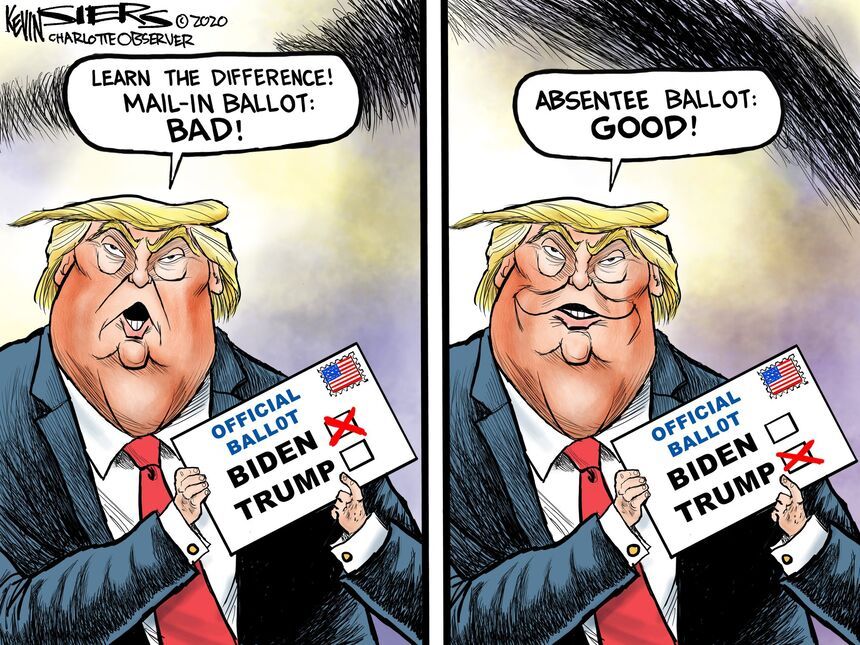
He has also shown two faces in his attack on mail-in voting, and Kevin Siers suggests a motive for the change, springing from Trump’s chances being tied to Florida, where stifling mail-ins might cost him a critical swing state.
It might be dismissed as campaign puffery if it didn’t feel like a part of his ridiculous claims about illegal voters being bused into New Hampshire and California in 2016, and conspiratorial rumors about illegal aliens voting, except that several states already have years of mail-in voting with virtually no cases of fraud.
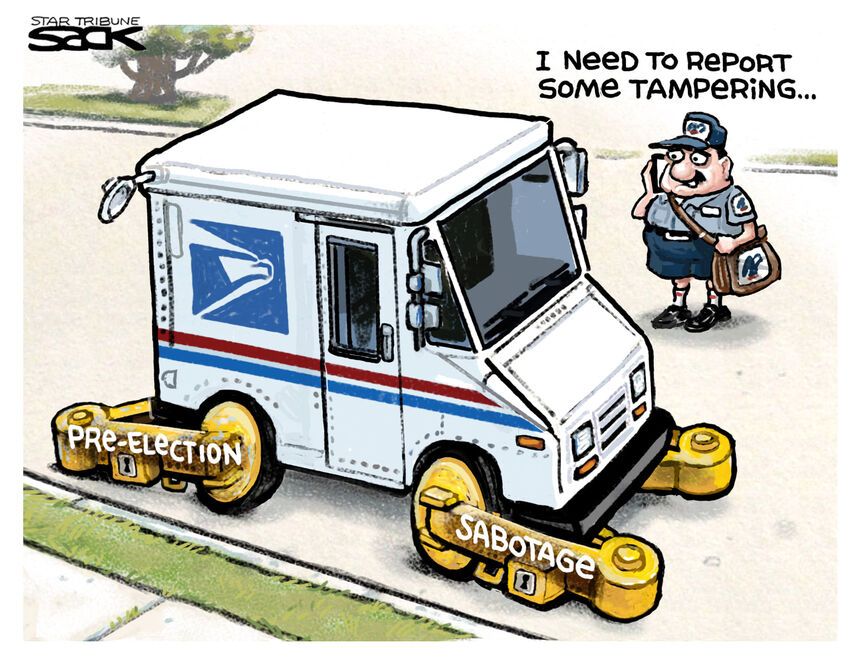
And if, as Steve Sack illustrates, he hadn’t take specific and deliberate steps to hobble the US Postal Service, installing at its head a loyalist with significant investments in companies that would benefit from privatizing the mail service.
Who has proposed that states pay 55 cents postage per ballot sent out, rather than the 20 cents previously charged. (Bearing in mind that members of Congress still get free postage for their correspondence.)
And if a number of experienced USPS heads had not been dismissed.
If it’s hard to prove this is election-tampering, it’s equally hard to view it as incidental.
Juxtaposition of Too Smart For The Room
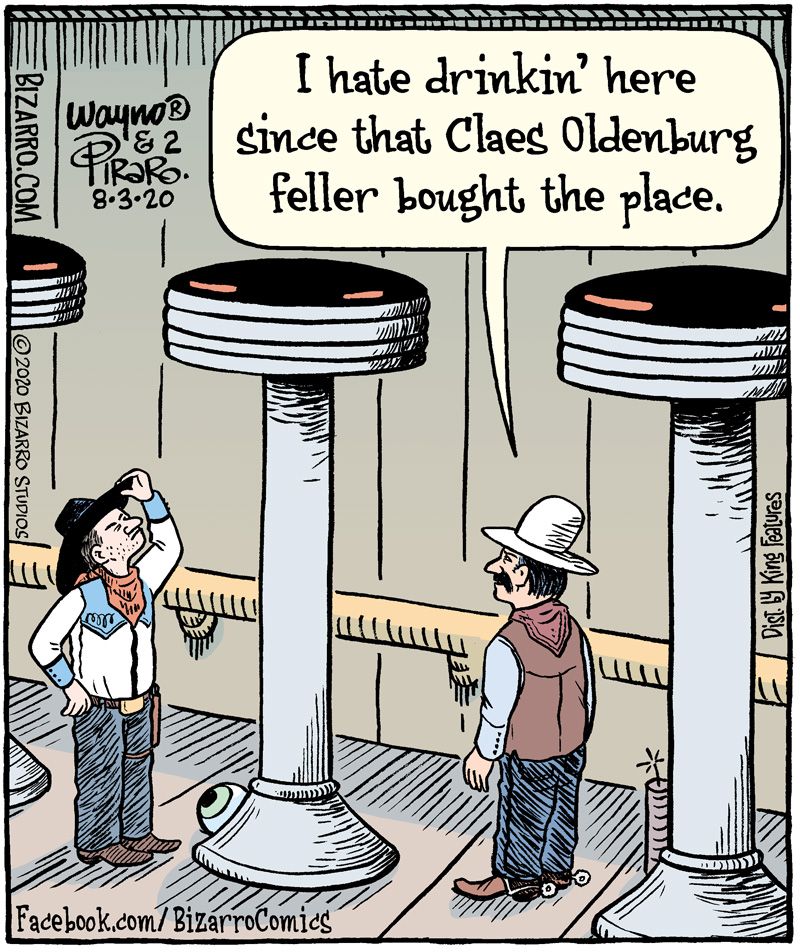
(Bizarro)

In the past week, we had two examples of cartoonists who didn’t get the message that strip cartoons are simply a form of commercial art and that you shouldn’t challenge readers to know things.
Being “too smart for the room” is deadly for stand-up comedians, because much of the laughter they get stems from the laughter of others in the audience. A joke that has to be explained falls completely flat in front of a live audience.
But comics are read in solitude, and the folks who didn’t get these didn’t grumble or throw vegetables. They just shrugged and went on to the next one.
And those who got them chuckled and felt smarter for being in on the joke.
The good part for the cartoonists being that the people who didn’t get it didn’t write impassioned letters to the editor demanding that strips referencing famous artists and sculptors be dropped forever.
As occasionally happens when one fumbles a political statement in a comic strip such that it can be easily misread.
No names, please.
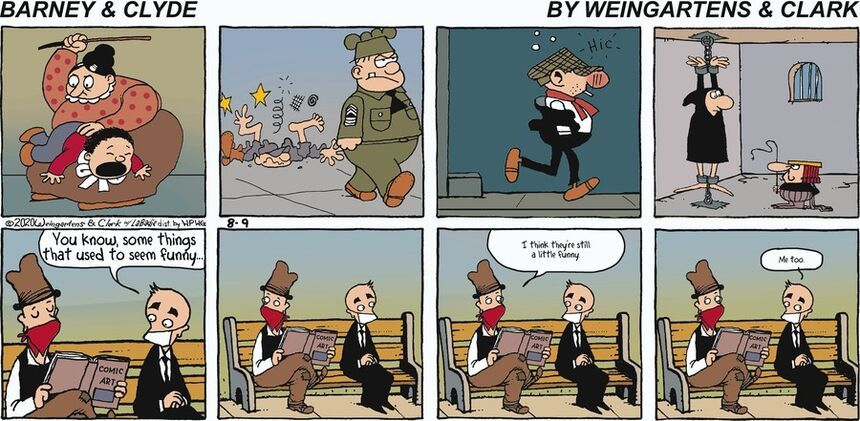
Meanwhile, the cartooning firm of Weingarten, Weingarten & Clark notes that times have changed and our sense of humor has become more sensitized, making it not necessarily harder to get a laugh, but harder to get a laugh people aren’t embarrassed to have laughed.
It is possible to be too sensitive, but, then again, it’s a whole lot easier to not be sensitive enough, and most jokes that begin with “I probably shouldn’t have laughed at this, but …” are things that, no, you shouldn’t have laughed at and you sure as hell shouldn’t be repeating.
A lot of it is inside vs outside humor: Irish can tell jokes about drinking that you shouldn’t tell about them, and black audiences howled with laughter at Steppin Fetchit, but that was in black films in black theaters. Not funny in front of an integrated audience.
Every group has its own clowns, but when you depict a clown from another group, you run a major, major risk of painting him as typical of that group.
As Christopher Titus — who built a half-hour comedy show out of the shards of his own brutally dysfunctional family — put it
If you’re telling a joke and the group of people that you’re telling that joke to are all the exact same color as you, you just let that joke fly, no matter what it is, right? But if one person in that group happens to be a photo-negative of the rest of you, you gotta run that joke through some filters, don’t you?
Well, you should, anyway.
Modern humor calls for a little more thought.
Artists should know Bosch and Oldenburg, just as standups should know both Lenny Bruce and Gallagher: Not just who they were but the differences between them.
Comic strip artists should probably know them all.
Comments 2
Comments are closed.